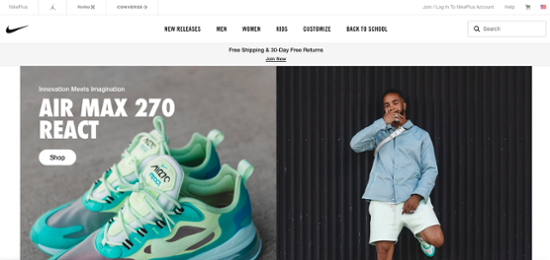In today's market, buyers hold all the power. They now have the resources and means to carefully consider their options before they decide to make a purchase.
In this environment, selling your products and services is harder than ever because you need to show your audience what you bring to the table and why they need your goods over your competitor's.
So how do you do this? With a value proposition.
A value proposition is a company's little golden ticket to success. But unless you craft one that's compelling, it could flop – and so could your business.
With this in mind, here are four easy steps to help you write a great value proposition for your company:
What Is a Value Proposition?
In business, a value proposition is a statement that makes a company and its products or services attractive to their audience. Quite simply – a value proposition tells the customer the value that your company can bring to them. It's what makes you stand out from your competitors in your industry.
Value propositions are a pretty important element for any and all businesses to have, regardless of your industry. Value propositions are directly linked to conversion rates, and more and more companies are starting to recognize this.
In a 2016 Scottrade survey of financial services firms, 53 percent said they were planning on evolving their business by developing or improving their value proposition.
What Makes a Good Value Proposition?
A good value proposition will be able to clearly and concisely tell your customers why your products/services are worth their investment.
The very best value propositions can be read and understood in just five seconds, while communicating what the buyer is getting out of their investment.
Unique Selling Proposition vs. Value Proposition
It's all too easy to confuse a unique selling proposition and a value proposition as one and the same. However, the two elements are actually quite different, but neither can stand without the other.
For starters, a unique selling proposition (USP) is built into value propositions. A USP is a quick point about your product/services that can sway a buyer in their final purchasing decisions. It's how you differentiate yourself from your competitors.
A value proposition, however, describes how your company's products/services can benefit the customer.
For example, let's say that a camera company has a USP that states they have "the lightest cameras in the industry!"
This is a unique point that differentiates them from other camera brands – you can fully expect that if you purchase a camera from another company, it will be heavier than one you get from this company. However, this doesn't necessarily express how the company's camera can offer value to the customer.
Now, let's take at what this camera brand's value proposition might be:
To capture every important moment in your life, Company X offers the lightest cameras on the market, so you can take them anywhere and make sure no memory is ever missed.
Elements of a Value Proposition
There are a few key elements that make up a good value proposition to get your company's message across. There's a general format that they often follow, and it includes:
A Headline
First and foremost, your headline should grab your audience's attention and make the sweeping declaration of the value of your product/services.
It needs to be clear, concise, and impactful.
A Sub-Headline or Small Paragraph
After you headline, you should have either a sub-headline or a small paragraph of two to three sentences elaborating on your primary headline. It should cover what you offer, who it's tailored for, and why it's of use to your target audience.
Bullet Points
To further expand, include a few bullet points to list some of the core benefits and features of your products/services. It's important that this information is organized into a bulleted list so it's easily and quickly digestible by the reader.
You should have between three to five bullet points.
Visual Element
Finally, your value proposition should include a visual element to show the value of your product/service. After all, a picture is worth a thousand words, so this can be an incredibly effective utilization of space.
Both still images and videos make for great visual elements.
How to Write a Value Proposition in 4 Steps

While writing a value proposition for you company might seem like a daunting task, we promise it's easier than you think.
There's a very simple process to achieving this, and sometimes all you need to do is answer a few of the right questions in order to craft the desired impression for converting leads into customers.
Let's take a closer look at the unique elements you should include when crafting a value proposition, and some of the questions you'll need to answer along the way to help you write one.
1. Identify the Value Your Products/Services Offer.
The first step in crafting your value proposition is to ask yourself what products or services your company offers, and what benefits do they offer to the customer? What's the ultimate purpose of your offering?
Answering these questions will help you define what you're really offering to your audience and grasp the value of your company within your industry.
2. Use Buyer Personas to Identify Your Customers' Problems.
In order to best serve your audience, you first need to understand them. You have to know who you're selling to before you can really sell to them.
To know how valuable your products/services will be to your buyers, you have to identify their challenges and pain points. The best way to do this is by developing buyer personas, which will help you better define and understand these elements.
By developing these personas first, businesses can tailor their messaging to focus on creating a value proposition that solves their buyers’ challenges and meets their goals.
Use market research, interviews, or other methods to ask the questions below.
Some Questions to Ask When Creating Buyer Personas:
-
What is their demographic (age, location, etc.)?
-
What is their job title or industry?
-
What are their daily challenges?
3. Connect Value to the Buyer's Pain Points.
Once you've identified unique pain points of your buyer personas, you'll be able to match your product/service benefits to them – this is where your goods really offer value to your customers, by solving their problems.
If you can clearly identify how your products resolve an issue or fill a hole in your customers' lives, you're well on your way to crafting a strong value proposition.
4. Differentiate Yourself.
These days, most industries and markets are highly saturated with lots of competition. It's hard to stand out among the crowd.
This is where your USP comes into play within your value proposition – to differentiate yourself from your competitors and convince your audience your products are the best investment.
Your value proposition should use inbound marketing methodology to strike a balance between explaining particular benefits of your products/services while engaging leads and customers.
Once you've at least outlined a draft of what your value proposition is going to be, it's time to take the next step to fully fleshing it out. You'll need to integrate your value proposition into the stitching of your company so it resonates throughout every touchpoint that customers experience with your brand.
How? Through the use of content marketing.
Content to Convey Your Value Proposition
Inbound marketing involves creating content to educate your customers on the value of your business.
When using any type of content, ensure your message is clear in showing your prospects and current customers how you’re different, and what improvements they should expect with your products or services.
Images/Infographics
Visuals are a subtle way of sharing your business message and displaying how you can make customers' lives easier. You could use stock photos for your content or create custom images like infographics.
As personalized graphics are more unique that stock photos, they're more likely to engage your leads, thus further separating you from the competition.
Landing Pages
These pages act as a gateway to your brand and your value proposition should be the most prominent part here because landing pages are designed to convert leads into customers. Like value propositions in traditional marketing, your proposition should be short and, once again, clear.
You can also take it a step further and have content offers on landing pages, such as an educational ebook in exchange for contact information. HubSpot recommends keeping value propositions and offer descriptions between one and three sentences.
Blogs
The title of your blog is crucial when communicating your value proposition. Titles can include the number of tips available or the benefits of using your product or service. They can also state an offer or have action verbs to show your message.
Whitepapers/Case Studies
For a more detailed way of explaining your value to potential customers, consider whitepapers. These are examples of powerful educational content as they often have research studies or examples that make a strong case for using your product or service.
Webinars
Another way to show customers the benefits of your products or services is to host a webinar. Make customers an offer to improve their processes or learn something new through a webinar and take them through the steps using your products.
Examples of Killer Value Propositions
In case you still need a few ideas to spark your creativity, here are a few great value proposition examples:
Spotify

"No Ads, No Limits, No Worries. Exclusive Podcasts. Curated Playlists. Over 50 Million Songs. Unlimited Skips. New Music Discovery."
Music software platform Spotify is straightforward in the delivery of their value proposition for customers. They showcase what they offer, and why it's great.
Nike

"Nike Delivers Innovative Products, Experiences And Services To Inspire Athletes. Live Support Available. Fast Shipping. Free 30-Day Returns. Free Shipping For Members."
Even highly reputable companies like Nike still need a value proposition. They tell you what they offer, who it serves, and throw in some of their unique selling propositions to drive it home.
Amy's

"Amy's is an organic food pioneer. Since 1987, Amy's has cooked with delicious, non-GMO ingredients, making gluten free, vegan and vegetarian foods for all."
In case you've never had the opportunity to try Amy's food products, let me be the first to tell you it's delicious.
Their value proposition is tailored toward a niche market – those who are gluten free, vegan, and vegetarian – however, they also emphasize that their meals aren't just for this specific group of people by saying it's "for all," which widens their audience.
The Core of Your Company's Value
Your value proposition should sit at the core of your company – it ultimately defines what you can offer to your customers. Without one, your business will likely lack direction and your sales teams will struggle to convert customers.
Crafting a value proposition will not only help you better understand your own business; it can help you better serve your audience.
Combining these two elements – understanding the worth of your company and the value it can provide to people – is what will allow you to propel your business toward sustainable growth and ultimately success within your industry.


Claire Cortese
I am a content creator here at Bluleadz. In my free time, I enjoy hugging dogs, watching reruns of The Office, and getting sunburnt at the beach.